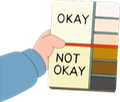Yes yes, language changes over time. I’ve heard that mantra for decades and I know it. That doesn’t mean there aren’t language changes that aren’t grating when they become fashionable (and hopefully temporary).
For me, “morals” being used as a crude catch-all application of “morality,” “ethics,” “integrity” or related concepts bothers me. Sentence example: “Maybe if society had morals there wouldn’t be so many minorities in prison.” 

An even more annoying otherwise-fluent-speaker modification I see is when “conscious” is used to mean “consciousness” and “conscience” interchangeably. Sentence example: “Single mothers on welfare that steal baby formula have no conscious.” It sounds like they’re saying the shoplifter is not mentally aware of their own actions, not that they’re lacking sufficient “morals” to let their baby starve for the sake of Rules-Based Order™.
There’s others, but those two come up enough recently, with sufficient newness, for me to bring them up here. Some old classic language quirks are so established and entrenched that even though I hate them, bringing them up would likely invite some hatemail and maybe some mystery alt accounts also sending hatemail after that. You know, because they “could care less(sic)” about what I think. 


theyre not interchangeable, whence means “from where” not just “where”
its been many years since i opened a math textbook but maybe its common in this sort of discourse where you need to explain whence something comes
Okay, I actually dug up the book, and I think I’m starting to understand how the authors are using “whence.”
When math books use “where,” they use it to clarify variables of some given formula. So you have something like:
Let X = A + B and Y = A + C where A = 2k, B = 2k + 1, and C = 2k + 1The “from where” definition doesn’t make much sense when you substitute one for another, but it does make sense when you reverse the order in which the formulas are introduced.
Let A = 2k, B = 2k + 1, and C = 2k + 1 whence X = A + B and Y = A + CIn other words, “where” links a main formula with smaller formulas that clarify on the main formula while “whence” links smaller formulas which are then used to build a main formula. Most math books I’ve seen would phrase the statement like
Let A = 2k, B = 2k + 1, C = 2k + 1, X = A + B, and Y = A + Cor
Let A = 2k, B = 2k + 1, and C = 2k + 1, and consider X and Y such that X = A + B, and Y = A + CI guess that’s a mystery solved. I really wished I figured this out while I was studying for my finals instead of over a decade later lmao